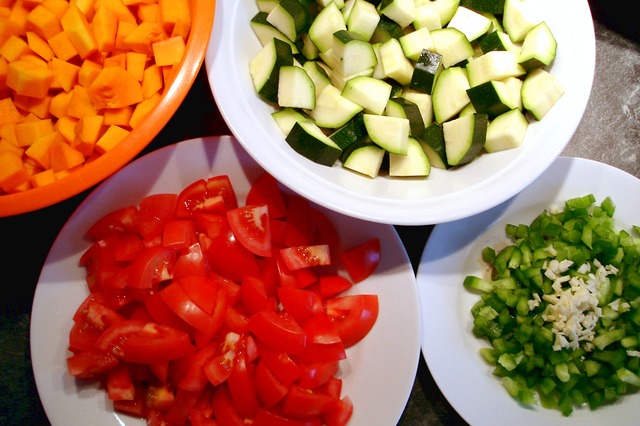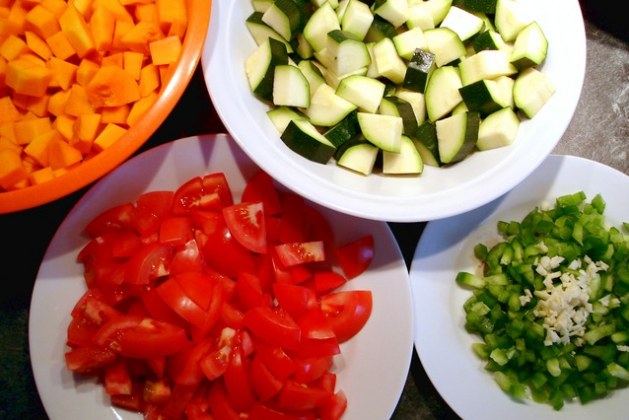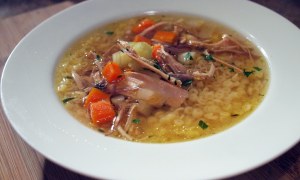
When Shakespeare refers to Cleopatra’s “Salad Days” in “Antony and Cleopatra” he means the time when she was young, inexperienced and lacked passion. Unfortunately, in the culinary realm, a salad dish often receives similar unfavorable treatment. An early course in a meal or a quick bite while dieting, a salad can seem like it lacks nutritional substance and flavor.
Finding a compromise between the dieter’s side salad and the fat-drenched chef salad can propose a foodie dilemma, but a high-level view simplifies the task.
The reason a hot dish is satisfying is that it fills you up. The nutritional ingredients that have staying power are protein, fat and fiber. These nutrients are easily added. Healthy protein, polyunsaturated fats and lots of fibrous fruits, vegetables, nuts and seeds will transform your wispy greens into a stately salad, and your desire to raid the kitchen pantry a mere hour after eating will disappear.
Protein and Fat
Protein and fat process in the body more slowly compared to carbohydrates, which means you stay fuller longer after eating them. They also offer the added benefit of combining them with simple sugars, which slows the absorption and prevents the spiking of your blood sugar.
For example, adding grilled salmon protein to an Asian salad with mandarin oranges will slow the citrus fruit’s sugar absorption. For the science curious out there, the reason is that the the physical components that compose fat and protein are more complex, and it takes longer for enzymes and other gastrointestinal organisms to break them down into tiny digestible parts.
Not all calories and fat grams are created equal. To make a salad with protein and fat that does not also burden your diet with an energy excess requires finding the healthiest foods concentrated in these nutrients.
Fish is a tremendously healthy protein source that the American Heart Association recommends eating a serving of twice each week. While it tends to be more expensive than chicken and beef and has a shorter shelf life, there are ways to bypass the cost and inconvenience with frozen filets and shellfish that come to life after a brief marinade and high-heat sear in a wok or grill.
Frozen tilapia, tuna, salmon, shrimp or scallops sprinkled with salt and thawed overnight are a blank canvas for a marinade composed of citrus juice, olive or safflower oil, and complementary spices and herbs.
A high-heat sear cooking method, such as a wok stir-fry or outdoor grill will seal in the moisture and caramelize the outer surface, rendering the flavor slightly sweet and the texture crispy. A successfully seared shrimp’s flavor can easily challenge that of a steak or chicken morsel.
The health value of fish is based in its high Omega-3 fatty acid level that supports the brain cells’ membrane integrity responsible for keeping your mind alert and healthy as you age. Its low saturated fat also makes it nutritionally superior to other meat types, and the protein composition is comparably high, with shrimp, tuna and salmon leading the category.
Oil also grounds a salad’s nutritional value as a main salad dressing ingredient. The key to ensuring a healthy fat composition is avoiding canola oil in favor of olive, safflower, sunflower, rapeseed and flaxseed oils that deliver mono- and poly-unsaturated fats, vitamin E and other benefits that bolster your health. Canola oil is a concentrated source of Omega-6 fat, a component that most diets are universally high in, which is thought to upset the body’s ratio of Omega-3 to Omega-6 fatty acids, causing inflammation and a variety of common chronic health conditions. Make a salad dressing at home with healthy oils or purchase a pre-made blend in a natural foods section.
Fiber
Finally, a salad is only as fulfilling as its fiber content, and the options are endless as its primary sources are fruits, vegetables and legumes, the foundation of the traditional salad. Radishes, pears, apple, avocado, figs, black-eyed peas, raisins, raspberries, artichokes, blackberries, oranges, beet and grapefruit are the produce types that offer the most fiber.
Fiber supports cholesterol balance, a healthy digestive cycle, and if you consume enough of it, it fills you up by sending a message to your body that it’s satiated for a few hours or more.
Putting it All Together
If you do not understand how to create a new salad combination, you are not alone. Most families serve the same recipes that many restaurants offer on a menu — a variation on the lettuce, tomato and cucumber blend, with the occasional cheese or olive thrown in.
The key to composing any dish is bringing together the healthy ingredients that you love that complement one another in flavor, texture and ethnic category.
Use a complementary foods guide to help you avoid only mimicking existing recipes rather than branching out into the recipe-free frontier for the experienced gourmet connoisseur, such as “The Flavor Bible”, a reference cook book that lists compatible foods.
The following salad ingredient combinations are a few examples that will benefit your health and your flavor palate.
-
Grilled or pan-seared salmon, seared sliced fennel, oranges and citrus dressing.
-
Pan-seared tuna, jicama, lime, tomatillo, red onion and cilantro.
-
Scallops, pear, spinach, shallots and ginger dressing.
-
Shrimp, black-eyed peas, green pepper, satsuma oranges lettuce, and a spicy creole dressing.
What are your tips for creating fulfilling salads?




Leave a comment
You must login or register to add a new comment.